Halloween, A Threat to a Longstanding Cultural Practice
 October has officially begun, ushering in what many fondly call the spooky season. While most Belizeans might be gearing up for Halloween with costumes and trick-or-treating, Maya traditions offer a different perspective as October ends and November begins. Depending on where you are in the country, you might hear about or even join in a Dia De Los Muertos or Los Finados celebration. These cultural events are dedicated to honoring the departed through communion, feasts, and prayers. However, as these age-old traditions intersect with the modern, commercialized Halloween festivities, there’s a risk of losing a generation to contemporary trends. News Five’s Paul Lopez delves deeper into this in this week’s installment of Kolcha Tuesday.
October has officially begun, ushering in what many fondly call the spooky season. While most Belizeans might be gearing up for Halloween with costumes and trick-or-treating, Maya traditions offer a different perspective as October ends and November begins. Depending on where you are in the country, you might hear about or even join in a Dia De Los Muertos or Los Finados celebration. These cultural events are dedicated to honoring the departed through communion, feasts, and prayers. However, as these age-old traditions intersect with the modern, commercialized Halloween festivities, there’s a risk of losing a generation to contemporary trends. News Five’s Paul Lopez delves deeper into this in this week’s installment of Kolcha Tuesday.
Paul Lopez, Reporting
Eighty-five-year-old Angelita Magana, a devout Catholic, faithfully attends mass every week at the San Joaquin Roman Catholic Church. A proud woman of Mestizo descent, she is deeply passionate about preserving her cultural heritage. As the world around her increasingly adopts a westernized version of Halloween, Magana remains steadfast in her commitment to the traditional celebrations of Dia De Los Muertos, or Los Finados. Her dedication to honoring her ancestors through these time-honored rituals is a testament to her enduring spirit and cultural pride.
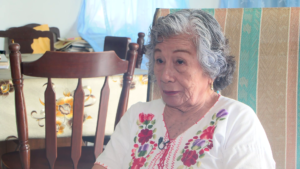
Angelita Magana
Angelita Magana, Cultural Activist
“Traditionally we know it as Hanah Pishan, meaning “food for the dead”. The Maya believed a lot or respected dead people because they believe that when you die you continue to live somewhere else. It is a tradition we have that is celebration started on the first of October when our tradition that night, the thirty-first, souls are released from heaven, and they are sent to visit their living family.”
And, as the dead return to earth to visit their families, their loved ones prepare for that encounter with a feast, hence the phrase, “food for the dead”. This is a ritual of gratitude.
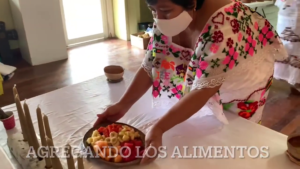 Angelita Magana
Angelita Magana
“The mayas they believed a lot in the dead. They believed in the souls. So it comes from them that they had to be grateful for the parents or whoever died in their family. They had to feed them once a year, give them some food they like, or drinks they like, or you usually had a rosary said in your home or an ascendado. That means you just set the food on the table, but it has to be very hot and you actually see the smoke from the food. The belief was that while that is going up, they are eating it. So, in the evening when the food is cooled already there is a little space that the food went down and we say, see the souls came and they received that food.”
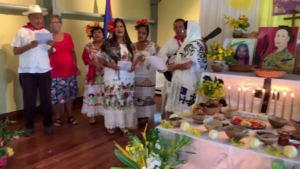 For Magana and her community, the annual tradition begins on October thirty-first, when it is believed that the souls are released back to earth. November first is dedicated to feeding the souls of children who have passed on, while November 2nd is reserved for honoring adults. This heartfelt practice is a poignant reminder of the community’s deep respect and love for their ancestors, blending reverence with celebration.
For Magana and her community, the annual tradition begins on October thirty-first, when it is believed that the souls are released back to earth. November first is dedicated to feeding the souls of children who have passed on, while November 2nd is reserved for honoring adults. This heartfelt practice is a poignant reminder of the community’s deep respect and love for their ancestors, blending reverence with celebration.
Angelita Magana
“We are trying to keep it up, because gradually the new generation is losing that spirituality that we have a Maya Mestizos, Belizean Maya Mestizos.”
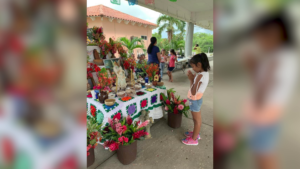 According to Magana, children and young adults are increasingly replacing these cultural practices with a commercialized version of Halloween centered around costumes, jack-o-lanterns, candies, and trick-or-treating. Here at the Banquitas House of Culture in Orange Walk Town, Cindey Rivero and her team have been working tirelessly to bring awareness to a younger generation through the annual Dia De Los Finados celebration.
According to Magana, children and young adults are increasingly replacing these cultural practices with a commercialized version of Halloween centered around costumes, jack-o-lanterns, candies, and trick-or-treating. Here at the Banquitas House of Culture in Orange Walk Town, Cindey Rivero and her team have been working tirelessly to bring awareness to a younger generation through the annual Dia De Los Finados celebration.
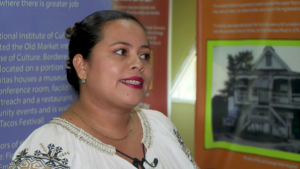
Cindey Rivero
Cindey Rivero, Community Arts Coordinator, Banquitas HOC
“It is our job and we take that opportunity seriously to tell them ok, the amount of candle you placed on the alter signifies this. The amount of treat represents something. So we try to educate them as best as possible, utilizing having elders within the community that has knowledge to share with them. So, for us it is important for them to know why we do certain things, and not just say oh we are offering food for the dead and they don’t come and eat it.”
Rivero concedes that in the age of technology her work is becoming increasingly challenging.
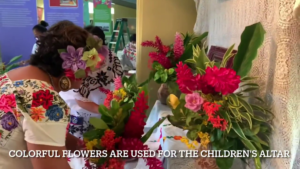 Cindey Rivero
Cindey Rivero
“We try to educate our children that Halloween is not a part of the Belizean culture or Belizean tradition. So, it is very difficult for them to understand, because with the increase in technology and vast information of the American population and what they do and influences within our country they don’t really understand and cannot see the separation between one particular celebration which is the Halloween and the other celebration, which is Dia De Los Muertos, which is our celebration.”
Cindey Rivero and Angelita Magana have learned that these family spirits are not to be feared, but celebrated. They cherish the presence of their ancestors, viewing it as a time of joy and reverence. This heartfelt belief is one they hope will endure for generations, even amidst challenges and changing times.
 Angelita Magana
Angelita Magana
“I remember one night I was sitting on my verandah out there and my husband had gone to help his brother in the shop and I was alone and rocking. All of a sudden, I felt those arms around me from the back and I felt that smell and I said ah dad. I opened my eyes and actually felt the hands moving away. I was not afraid. I was not afraid. I just said, my dad came to visit me. That is it, because we were taught they wont hurt you.”
Paul Lopez
“That must have been a very special moment for you.”
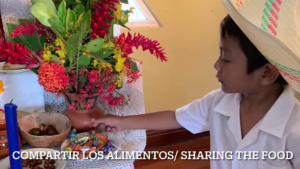 Angelita Magana
Angelita Magana
“Very, I cried.”
Reporting for News Five, I am Paul Lopez







Facebook Comments